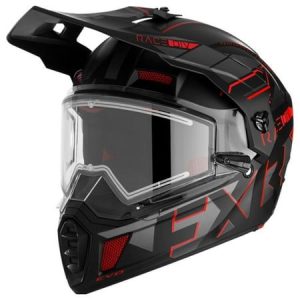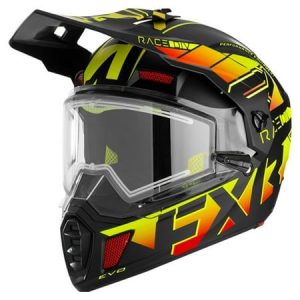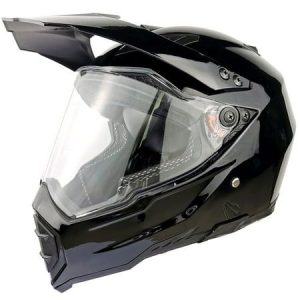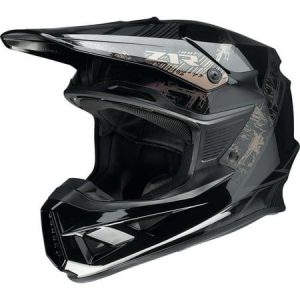Straddling your motorcycle, the rumble of the engine beneath you, the wind whipping through your hair – it’s a feeling of pure freedom. But before you twist the throttle and hit the open road, there’s one crucial piece of gear you should never leave behind: your helmet. A helmet is more than just a safety requirement; it’s an essential piece of equipment that protects your head in the event of an accident. However, unlike a trusty leather jacket that can last for years, motorcycle helmets have a limited lifespan. So, how long exactly are motorcycle helmets good for?
This article dives into the factors affecting a motorcycle helmet’s lifespan and provides essential tips on maximizing its effectiveness. We’ll explore how proper care, storage, and riding habits can extend the longevity of your helmet, while also addressing the telltale signs that it’s time for a replacement.

Understanding the Factors Affecting Helmet Lifespan
Several factors contribute to a motorcycle helmet’s lifespan, including:
-
Materials: Modern helmets are typically constructed from a combination of materials like polycarbonate shells and EPS (Expanded Polystyrene) liners. These materials are designed to absorb impact and dissipate energy during a crash. However, over time, the plastics and foams can degrade, reducing their effectiveness.
-
Use and Storage: Frequent use and exposure to extreme temperatures can accelerate the breakdown of the helmet’s materials. Proper storage in a cool, dry place away from direct sunlight helps preserve the helmet’s integrity.
-
Maintenance: Regular cleaning and inspection of your helmet are crucial for maintaining its optimal performance. Dirt, grime, and sweat can break down the materials, while unnoticed damage can compromise its protective capabilities.
-
Accidents: Even a minor accident can damage the helmet’s internal structure, even if there are no visible cracks on the shell. A helmet is designed for a single impact; after an accident, it’s essential to replace it for optimal protection.
The General Lifespan of a Motorcycle Helmet: A Guideline
While there’s no one-size-fits-all answer, most motorcycle helmet manufacturers recommend replacing your helmet every five to seven years. This timeframe is a general guideline and can vary depending on the factors mentioned above.
Here’s a breakdown of how different factors can influence a helmet’s lifespan:

-
Frequent Use: Riders who use their helmets daily for commuting or long-distance rides may need to replace them more frequently than occasional riders.
-
Storage Conditions: Helmets stored in hot garages or exposed to direct sunlight may experience faster degradation compared to those kept in cool, dry environments.
-
Maintenance Practices: Regular cleaning and proper care can extend the lifespan of your helmet, while neglecting maintenance can shorten it.
Signs It’s Time to Replace Your Motorcycle Helmet
Even if your helmet is within the five to seven-year timeframe, there are specific signs that indicate it’s time for a replacement:
-
Visible Damage: Cracks, dents, or deep scratches on the shell compromise the helmet’s ability to protect your head. Never attempt to repair a damaged helmet; replace it immediately.
-
Worn-Out Padding: The helmet’s inner padding plays a crucial role in absorbing impact. If the padding feels flat, compressed, or shows significant wear, it’s no longer effective and needs to be replaced. Some helmets allow for replacement of the inner liner, while others require a complete helmet replacement.
-
Loose Fit: A properly fitting helmet should snugly hug your head without causing pressure points. If your helmet feels loose or wobbly, it may not provide adequate protection in a crash.
-
Exposure to Extreme Conditions: If your helmet has been exposed to extreme heat, cold, or harsh chemicals, the materials may be weakened, necessitating a replacement.
Maximizing Your Helmet’s Lifespan: Simple Tips for Extended Protection
By following these simple tips, you can extend the lifespan of your motorcycle helmet and ensure it offers optimal protection for years to come:

-
Clean Your Helmet Regularly: Use a mild soap solution and lukewarm water to clean the helmet’s exterior shell. For the visor, opt for a microfiber cloth and a cleaning solution specifically designed for visors to avoid scratches.
-
Maintain the Padding: Remove the removable inner liner and wash it according to the manufacturer’s instructions. If the padding shows signs of wear and tear, replace it with genuine, manufacturer-approved padding.
-
Store Your Helmet Properly: When not in use, store your helmet in a cool, dry place away from direct sunlight and extreme temperatures. Avoid storing it near harsh chemicals or fumes.
Inspect Your Helmet Regularly: A Crucial Habit for Safety
Develop a habit of regularly inspecting your helmet for any signs of damage or wear. Here’s what to look for:
-
Shell Integrity: Carefully examine the shell for any cracks, dents, or deep scratches. Even a minor crack can significantly reduce the helmet’s effectiveness in a crash.
-
Padding Condition: Feel the inner padding for any signs of compression, flattening, or excessive wear. Replace the padding if it feels worn or doesn’t provide a snug fit.
-
Visor Clarity: Check the visor for scratches, cloudiness, or any signs of deterioration that could impair your vision while riding.
-
Retention System: Ensure the helmet’s chin strap and buckle function properly. A faulty retention system can cause the helmet to come loose in a crash.
Don’t Compromise on Safety: Invest in a Quality Helmet
While the price of a motorcycle helmet might seem like an initial investment, it’s crucial to remember it’s an investment in your safety. Helmets from reputable manufacturers are constructed with high-quality materials and undergo rigorous safety testing to meet Department of Transportation (DOT) standards. While some budget-friendly helmets may meet the minimum safety requirements, opting for a higher-quality helmet from a trusted brand can offer additional features and improved protection.
Here are some benefits of investing in a quality motorcycle helmet:

-
Enhanced Safety: Premium helmets often use advanced materials and construction techniques that provide superior impact absorption and protection compared to budget options.
-
Improved Comfort: High-quality helmets are designed with comfort in mind, featuring ventilation systems, moisture-wicking liners, and a better overall fit for a more enjoyable riding experience.
-
Greater Durability: Quality helmets are built to last, using materials that resist wear and tear better than budget options, potentially extending their lifespan.
Finding the Perfect Helmet: Selecting the Right Gear for Your Needs
With a vast array of motorcycle helmets available, choosing the right one can feel overwhelming. Here are some key factors to consider when making your selection:
-
Helmet Type: There are three main types of motorcycle helmets: full-face, modular, and half-helmet. Full-face helmets offer the most protection, while modular helmets provide the versatility of a flip-up visor. Half-helmets, legal in some states, offer minimal protection. Choose the type that best suits your riding style and prioritizes safety.
-
Fit: A snug but comfortable fit is crucial. The helmet should not cause pressure points but shouldn’t wobble excessively either. Visit a reputable motorcycle dealership to get professionally fitted for a helmet.

-
Safety Rating: Look for helmets that meet DOT safety standards. Additionally, some helmets carry certifications from organizations like Snell Memorial Foundation, which offer even more stringent testing criteria.
-
Comfort Features: Consider factors like ventilation, weight, and visor options. A well-ventilated helmet helps keep you cool on hot rides, while a lightweight helmet reduces neck strain. Choose a visor with anti-scratch and anti-fog treatments for optimal clarity.
-
Style: Motorcycle helmets come in a wide range of styles and colors to suit your taste. However, prioritize safety over aesthetics; choose a helmet that meets the necessary safety standards and offers a comfortable fit.
Invest in Your Safety: Don’t Wait Until It’s Too Late
A motorcycle helmet is an essential piece of safety gear, just as important as your motorcycle itself. Don’t wait for your current helmet to show signs of wear or reach its lifespan before replacing it. Prioritize your safety by ensuring your helmet offers optimal protection on every ride.